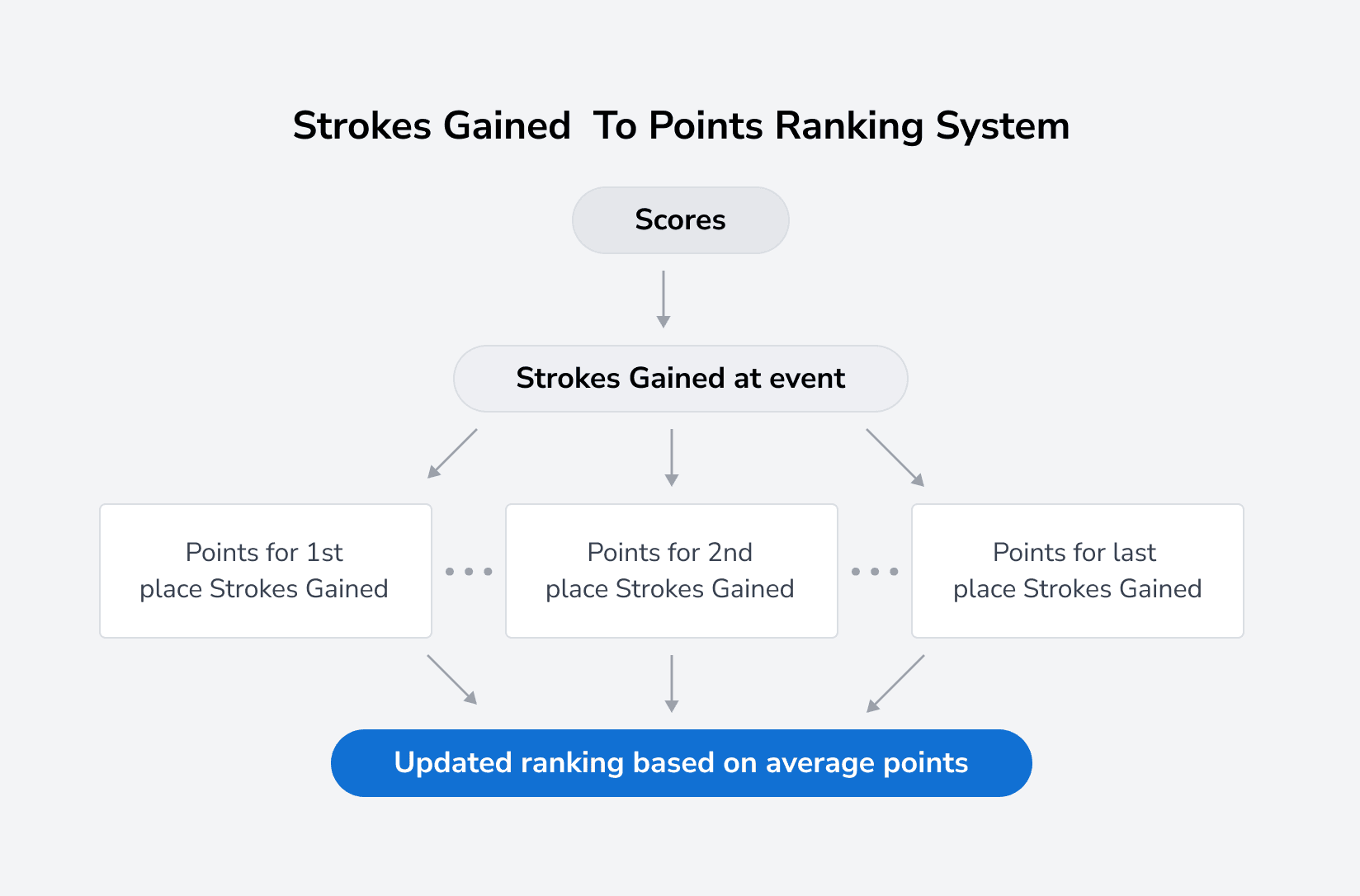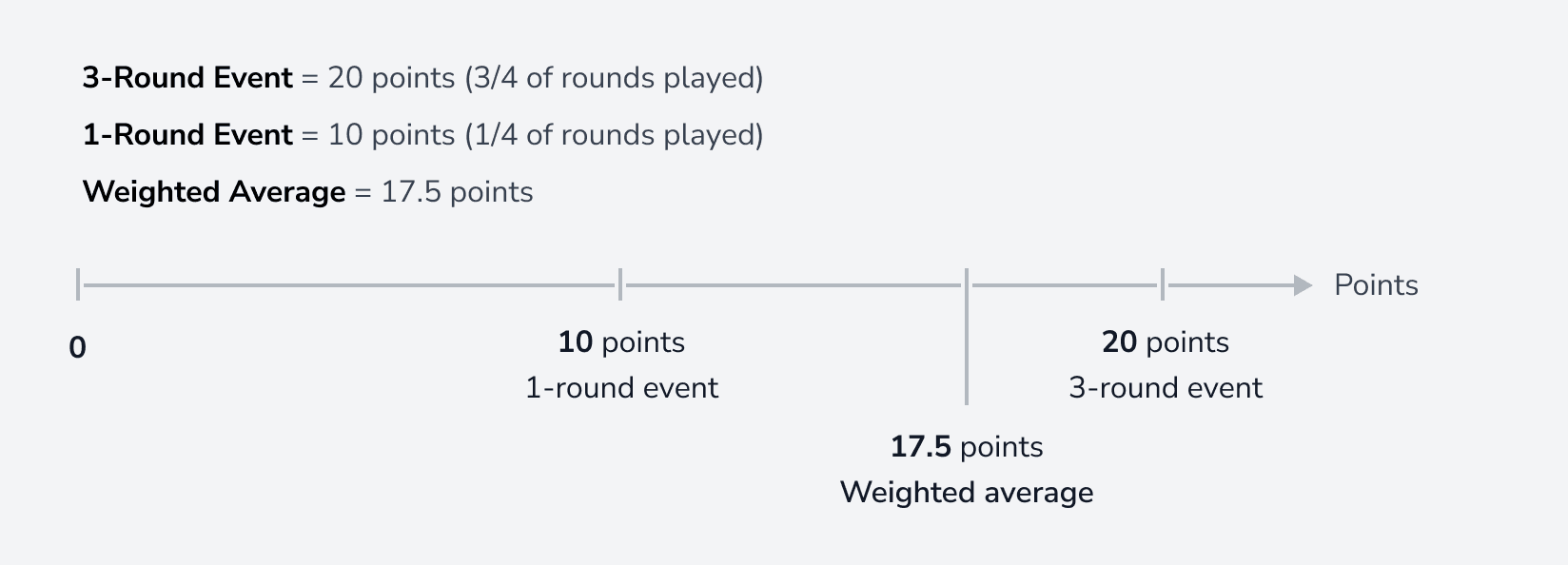National Collegiate Golf Ranking System

Professor Mark Broadie, the inventor of Strokes Gained, offers a detailed overview of the new National Collegiate Golf Ranking System and provides answers to Frequently Asked Questions
Our goals are to provide a fair, accurate and transparent ranking system that reflects the desires and priorities of the NCAA membership. In accordance with these goals, the algorithm for the new National Collegiate Golf Ranking system has changed from the original material published in the summer of 2023.
The changes have been made in order to improve the ranking and incorporate feedback from the membership. The main change, which was a strong preference of the NCAA membership, is to include stroke differential in the ranking, so now points will be awarded based on Stokes Gained in each event and will include stroke differentials at every finish position.
Goals of the National Collegiate Golf Ranking System
Fairness. Accuracy. Transparency.
Fair: Better performance (taking into account strength of field and course difficulty) leads to better ranking.
Accurate: All information is combined and used in a mathematically justifiable and rigorous manner.
Transparent: The main ingredients to the ranking (i.e., the points) are visible to the public.
Main Features of the National Collegiate Golf Ranking System
Better performances (taking into account the field strength) lead to a better rank
Stroke differential matters
A modest premium for better finishes
Positive points for all finish positions
No advantage or disadvantage for playing in weak or strong events

"SG to points” ranking system steps
Step 1. Points are awarded by SG at each event, and since the SG order is the same as the score order, the most points will be awarded for first place and the fewest points for last place.
Step 2. Points are averaged across events to get a team’s average points.
Step 3. Teams (or individuals) are ranked based on average points.
Properties of the “SG to points” ranking system:
1. Better performances earn more points.
2. Stroke differential matters: There are not fixed points for each finish position.
3. Points give a modest premium for top finishes.
4. Points make the system transparent.
Three Flavors of Strokes Gained (SG)
1. SG to fixed benchmark (used in consumer apps): Doesn’t take course conditions into account.
2. SG to field (used by the PGA Tour): Takes course conditions into account but not strength of field (SoF).
3. SG at a neutral course (used in National Collegiate Golf Rankings and referred to as SG for short): Takes course conditions and strength of field (SoF) into account; takes into account all levels of connections for accurate results; more accurate than ‘adjusted scores’ and ‘head-to-head’ methods; computed using round scores only (shot level data is not needed).
National Collegiate Golf Ranking Details
Average Points Calculation
A team’s average points is weighted by the number of rounds in each event.
Example. Suppose a team earns 20 points in 3-round event A and 10 points in 1-round event B. The team’s (weighted) average points is 17.5, because the 20 points in event A represents 3/4 of the team’s total rounds and the 10 points in event B represents 1/4 of the team’s total rounds.

Implication: Two good performances in 3-round events will count the same as three good performances in 2-round events.
Rationale: Teams are neither penalized nor rewarded in the rankings for playing in shorter or longer events (ignoring travel time and cost).
Event Strength and Course Difficulty
A team’s performance matters for the ranking, but – in a vacuum – absolute scores, event strength and course difficulty do not matter.
Example: A team scores 870 in a three-round event with four counting scores, i.e., 290 per round and 72.5 per player per round. In a strong event, this might correspond to a ninth-place finish, and an SG for the event of 1.0 with 50 points awarded.
In a weak event, playing the same course and same conditions (i.e., same wind, rough, green firmness, pin locations, etc., giving the same course difficulty), the same 870 performance might correspond to a second-place finish. It will have the same SG for the event of 1.0 with the same 50 points awarded.
If the team plays in conditions that are easier by 1 stroke per round (e.g., less wind, easier pin locations, etc.), the team would need to score 858 (12 strokes better because of 3 rounds and 4 players) to have the same SG for the event of 1.0 and the same 50 points awarded.
Match Play Events
Fairness principle: Teams receive comparable points in one-round match play events as one-round stroke play events.Team A plays Team B in a match. The total points awarded is the sum of Team A and Team B’s average points. Team A beats Team B: Team A’s average points will increase, team B’s average points will decrease. With a win, Team A’s average points will increase more beating a strong team than beating a weak team.
Design choice: Points are awarded based on the outcome of each match between two opponents.Each match between two opponents counts as one round. The margin of victory in match play does not affect the points awarded. Example 1: Team A will receive the same points beating Team B with a score of 5-0 or 3-2. Example 2: Player A will receive the same points beating Player B with a score of 6&5 or 1 up. This was the strong preference of the membership and NCAA golf committees.
Beating a stronger team earns more points.
Example 1: Team A has 40 average points and Team B has 30 average points (lower rank). Team A would receive around 46 points for a win.
Example 2: Team A has 40 average points and Team B has 80 average points (higher rank). Team A would receive around 71 points for a win.
Total points are split, no matter the outcome.
Example: Team A has 40 average points and Team B has 30 average points.
Team A wins: Team A receives around 46 points, team B receives 24 points (70 total points). Team A’s average points increases slightly because team A was expected to win.
Team B wins: Team A receives around 27 points, Team B receives 43 points (70 total points). Team B’s average points increases substantially because team B was not expected to win.
Tied match: Team A and Team B receive 35 points (70 total points). Team A’s average points decreases slightly because team A performed below expectation. Team B’s average points increases slightly because Team B performed above expectation.
Projected Rankings
Projected rankings will show likely ranking outcomes based on events as they are in progress. Because there are not fixed points per finish position (points depend on stroke differentials), projected rankings will be approximate. Even though points are not fixed by finish position, reasonable approximate projections will still be available.